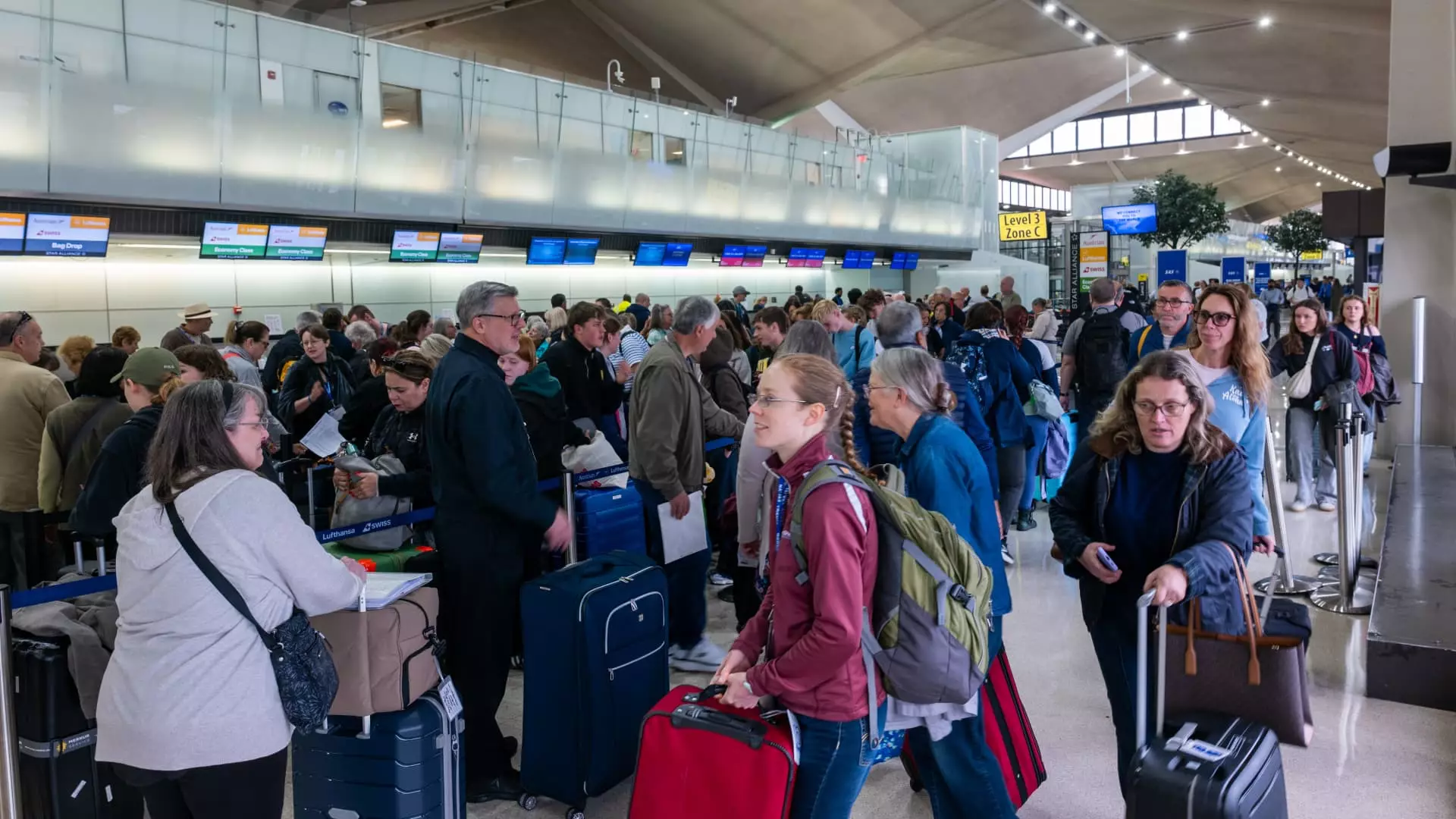Recent incidents within the United States air traffic control system have unveiled a haunting reality that few recognize: our aviation infrastructure is in a precariously outdated state. The scenario that unfurled around Newark Liberty International Airport last week epitomizes the issues lurking beneath the surface of an otherwise crucial service. When air traffic controllers temporarily lost all communication and radar capability with incoming and outgoing flights, the consequences were nothing short of catastrophic—over 1,500 flights delayed, a visible backlog, and a chorus of public concern. While that day may have seemed like an innocent blip in the aviation world, it marks a harrowing symptom of a deeper ailment.
The Fallout: Stress and Staffing Shortages
The aftermath of the Newark incident isn’t merely numerical; it extends far beyond the chaos on the ground. Air traffic controllers, those unsung heroes navigating the precarious dance of thousands of aircraft daily, are suffering. The National Air Traffic Controllers Association reported that many controllers involved in that calamitous day have since taken time off to recover from the mental toll of such overwhelming stress—an all-too-common occurrence given the burdens they bear. But why are our air traffic control systems so fragile? For years, there has been an acute shortage of personnel, and the situation appears to be worsening.
Compounding the problem is the aging technology that underpins our air traffic control infrastructure. When contemporary systems fail, as they did in Newark, the limits of our communication capabilities become glaringly apparent. The Federal Aviation Administration (FAA), rightly voicing concerns, stated that the outdated telecommunications infrastructure is creating adverse effects on morale and efficiency. Just as a car can’t run without gasoline, our air traffic system cannot operate effectively under resource constraints, both in terms of staff and technology.
Corporate Responsibility and Market Forces
In an unexpected twist, United Airlines found itself in a precarious position following the Newark debacle, announcing cuts of 35 flights daily from this major hub to alleviate congestion. CEO Scott Kirby acknowledged in a customer note that the grounding of flights and the stressed controllers were the result of systemic failures that were, shockingly, years in the making. His clear acknowledgment echoes a sentiment we should all embrace: Corporate responsibility isn’t just a box to check off; it’s essential for system efficiency and customer satisfaction.
Yet, the air transport industry is not merely a faceless entity. It is composed of men and women working diligently to serve passengers and connect families. The severe understaffing that has plagued Newark is not an isolated phenomenon. It is a reflection of wider systemic issues, including insufficient incentives to recruit and retain skilled air traffic personnel—a crisis that has been festering over numerous administrations. We owe it to our aviation workforce to create an environment that values their expertise and protects their mental well-being.
Policy Failures: A Call to Action
America’s federal framework has demonstrated severe shortcomings regarding air traffic control policies. A series of haphazard responses to chronic understaffing and continuous technological lagging has bred a climate of dysfunction. The recent move by the FAA to transfer controllers from Long Island to Philadelphia may have seemed like a remedy, but it is akin to boiling a pot of water without lids; steam will escape, and the situation will inevitably spill over.
Transportation Secretary Sean Duffy’s promises of unveiling a “brand new air traffic control system” glimmer with hope but must be tempered by realism. Pledging new technologies while neglecting the pressing staffing shortages feels like putting a Band-Aid on a gaping wound. Effective management requires foresight and prioritization—traits often lacking in bureaucratic protocols. As New Jersey Governor Phil Murphy urges attention to this critical issue, it’s evident that political will and pragmatic solutions must converge to sculpt an aviation infrastructure robust enough to support modern demands.
The Impending Crisis: What’s at Stake?
Without significant investment and reform, the U.S. might find itself edging towards a broader crisis—one where the integrity of aviation networks is compromised at the worst possible moments. In an era marked by global travel expansions and anticipated passenger surges—think World Cup Finals—we cannot afford to ignore these inefficiencies.
The world is watching, awaiting a response from our leaders, who must realize the stakes extend far beyond mere inconvenience. We now stand at a crossroads. Will we initiate progressive changes to modernize our air travel experience, or will we remain shackled to the failures of the past? The choice is resoundingly clear: a vote for modernization and support of our essential workforce is a vote for safer, more reliable skies.

